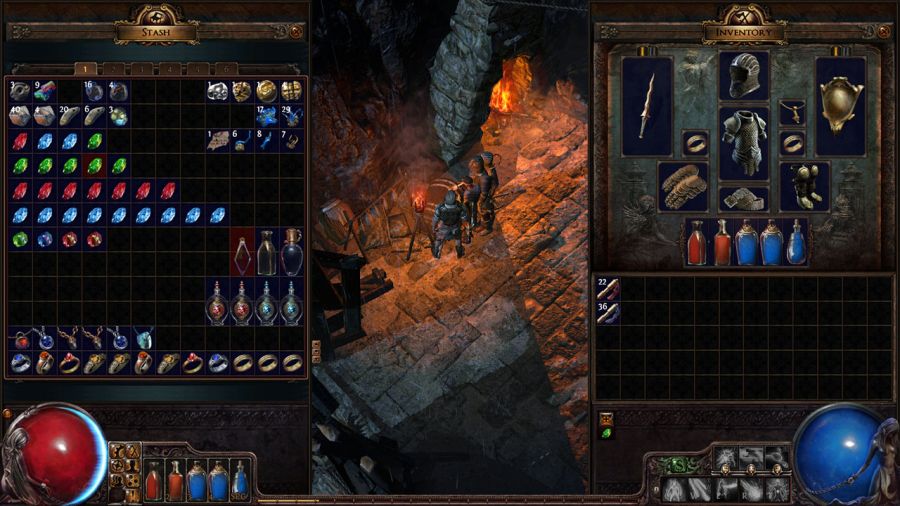Allow the players the ability to make the game personal
Mark remembers a talk that he had with Christopher Rush, one of the most famous cards illustrator. Among one of his illustrations, the Black Lotus, the most famous and expensive card from the game. In that talk Chris pitched the idea of making basic lands with no text and full frame art. The argument to support this idea was that basic lands are something that every player knows, why not skip the text box all together? The argument against it was that basic lands shouldn't stand out on the board and draw more attention than all other cards that should be more important for the players.
After some time Mark was making a new, comedy inspired, set (Unglued). That set was meant to break the normal rules of the game and allow for some wacky new stuff. Mark used that opportunity to persuade the company in printing full frame art lands. The set wasn't a regular one and wasn't meant for competitive play. Nobody was against printing such lands in such set. The huge success of the new lands proved that the players loved the idea and over the years it was repeated on other sets.
A personal comment: sometimes the developers forbid themselves based on beliefs that are later disproved. In this case, nobody wanted to support the idea of full frame art lands, except for Mark. Could it have failed? Yes. But without trying they would never known.
Mark learned, in college, some interesting fact about advertising. If you are facing a multitude of products to choose from and you have never bought of any of them, which one you are more likely to choose? The brain has a tendency to look for the option that is the closest to something you are familiar with and that often means looking for a known brand. The reason for this is that if you already know the brand you assume that that brand has the overall same quality across many products. The lesson that he's giving is that full frame art lands have an emotional value. Magic is well known for allowing players to choose colors, different strategies, each card evokes some emotion and there are multiple forms to win. Magic is a strong brand and the brand new full frame art lands are one more way to strengthen this connection between the players, the game and the brand.

Path of Exile is a tremendously complex game, but it has a goal and it's pretty successful at it. The game allows the player total freedom to build a character with trillions of combinations of skills and items. This game's target audience wants that freedom and the game successfully delivers it. No other game comes close to the level of freedom that this game has.
Now let's not judge how much money people spend on a game and not discuss social status. Path of Exile, as many other games today, sell skins and other luxury items. In some games this is called "pay to win", because what you buy in game provides great advantages or is required to experience some part of it. In Path of Exile some players spend hundreds, if not thousands, of $ to buy purely cosmetic stuff that provide the player with no advantage at all. Why would a player do that? Because they feel attached to the game and they want a personal experience that they can't have without buying such items in game. I don't have professional experience but that's how I perceive Mark's argument in the case of Path of Exile.
The essence in Mark's lesson is that the players want to play the game in whichever way they desire to. If the players hate a card, they can choose to not play with it. If they hate a format, they can play another or create a format of their own. As Mark himself notes, your audience is very powerful because their voice is very loud. If they stop playing your game, that's the nail in the coffin for that game's makers. Let's think about Bioshock. What made Bioshock stand apart from other first person shooters? It offered a deep story and customization. The players were offered powers, upgrades, different weapons and they could choose their own path to progress. That's all more related to game mechanics and design philosophies but if we go down to level design, what can we learn?
Think about car racing games. There is a fixed track and you can't change that. Some racing games such as Need for Speed brought the idea of shortcuts. The track is still fixed, but now we give the players the option to take a shortcut and use it to their advantage to win more races. Going further and we have games that allow players to build their own tracks. Doom in 1993 offered secrets and the players could pit monsters against each other to save their ammo. F.E.A.R. offered different paths in each level and players could attack from different points. F.E.A.R. took one step further and had an A.I. that could use the secondary paths to ambush the player. Now I lack the professional experience, but look at the Jedi Knight games. The level design made sure that the players can complete each level in multiple ways, some being harder or faster than others. That's the key: the players want to have their own personal experience. The fact that there are multiple channels dedicated to speed runs or players that challenge themselves to complete an RPG without levelling up or a game without taking damage proves Mark's point.